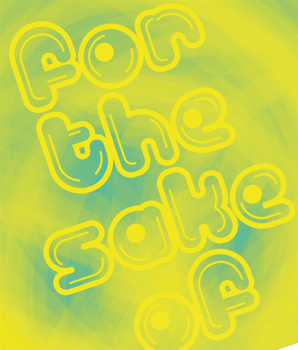Welcome at the Interface Culture program website.
Acting as creative artists and researchers, students learn how to advance the state of the art of current interface technologies and applications. Through interdisciplinary research and team work, they also develop new aspects of interface design including its cultural and social applications. The themes elaborated under the Master's programme in relation to interactive technologies include Interactive Environments, Interactive Art, Ubiquitous Computing, game design, VR and MR environments, Sound Art, Media Art, Web-Art, Software Art, HCI research and interaction design.

The Interface Culture program at the Linz University of Arts Department of Media was founded in 2004 by Christa Sommerer and Laurent Mignonneau. The program teaches students of human-machine interaction to develop innovative interfaces that harness new interface technologies at the confluence of art, research, application and design, and to investigate the cultural and social possibilities of implementing them.
The term "interface" is omnipresent nowadays. Basically, it describes an intersection or linkage between different computer systems that makes use of hardware components and software programs to enable the exchange and transmission of digital information via communications protocols.
However, an interface also describes the hook-up between human and machine, whereby the human qua user undertakes interaction as a means of operating and influencing the software and hardware components of a digital system. An interface thus enables human beings to communicate with digital technologies as well as to generate, receive and exchange data. Examples of interfaces in very widespread use are the mouse-keyboard interface and graphical user interfaces (i.e. desktop metaphors). In recent years, though, we have witnessed rapid developments in the direction of more intuitive and more seamless interface designs; the fields of research that have emerged include ubiquitous computing, intelligent environments, tangible user interfaces, auditory interfaces, VR-based and MR-based interaction, multi-modal interaction (camera-based interaction, voice-driven interaction, gesture-based interaction), robotic interfaces, natural interfaces and artistic and metaphoric interfaces.
Artists in the field of interactive art have been conducting research on human-machine interaction for a number of years now. By means of artistic, intuitive, conceptual, social and critical forms of interaction design, they have shown how digital processes can become essential elements of the artistic process.
Ars Electronica and in particular the Prix Ars Electronica's Interactive Art category launched in 1991 has had a powerful impact on this dialog and played an active role in promoting ongoing development in this field of research.
The Interface Cultures program is based upon this know-how. It is an artistic-scientific course of study to give budding media artists and media theoreticians solid training in creative and innovative interface design. Artistic design in these areas includes interactive art, netart, software art, robotic art, soundart, noiseart, games & storytelling and mobile art, as well as new hybrid fields like genetic art, bioart, spaceart and nanoart.
It is precisely this combination of technical know-how, interdisciplinary research and a creative artistic-scientific approach to a task that makes it possible to develop new, creative interfaces that engender progressive and innovative artistic-creative applications for media art, media design, media research and communication.
aus Liebe zu
RESIDENCY – GESPRÄCHE – AUSSTELLUNG
Eröffnung: 3. April 2025, 19.00 Uhr; Dauer bis 25. April 2025 DIE GALERIE · Gmunden, Rinnholzplatz 8
Ein Kunstprojekt von Adriana Torres Topaga
In einer Welt, die von drängenden Problemen wie Konsumismus, Depression, Rassismus, Sexismus, Klimawandel und Krieg geprägt ist, sucht die Künstlerin Adriana Torres Topaga nach einem Licht – einem Moment der Pause und des Innehaltens. In dieser einzigartigen Ausstellung verwandelt sie Die Galerie Tacheles in Gmunden in einen einladenden Wohnraum und ein kreatives Labor für Dialoge und schöpferische Prozesse. Hier wird Kunst zu einem Raum der Reflexion und des Austauschs.
Folgende Termine laden zum Austausch, Tanzen, Gespräch, zur Kreativität und zum gemeinsamen Lesen von Auszügen aus Texten ein, die mit dem Thema in Verbindung stehen:
Fr, 4.4.25 – aus Liebe zu 1
15:00 – 18:00 Uhr
Text: Alles über Liebe – Neue Sichtweisen / Bell Hooks
Sa, 12.4.25 – aus Liebe zu 2
09:00 – 12:00 Uhr
Text: Borderlands. La Frontera. The New Mestiza / Gloria Anzaldúa
Sa, 19.4.25 – aus Liebe zu 3
09:00 – 12:00 Uhr
Text: YANAK UYWAÑA. Die gegenseitige Erziehung der Künste / Elvira Espejo Ayca
Fr, 25.4.25 – aus Liebe zu 4
15:00 – 18:00 Uhr
Text: Unruhig bleiben / Donna J. Haraway
Fr, 25.4.25 – Finissage & Rückblick
19:00 Uhr
Zusammengespräch mit Marlene Elvira Steinz
Die Zeit zwischen den vier aus Liebe zu-Veranstaltungen wird von der Künstlerin Adriana Torres für ihren eigenen kreativen Prozess genutzt. Sie wird Zeichnungen, Gemälde, Texte, Collagen, Videoanimationen oder Objekte produzieren, die von den Gruppendiskussionen und ihrer eigenen Biografie beeinflusst sind.
Während der Öffnungszeiten der Galerie wird der partizipative Prozess, der im Rahmen der aus Liebe zu-Veranstaltungen begonnen wurde, weiter fortgesetzt. Die Ergebnisse des Projekts werden während des gesamten Aufenthalts in der Galerie in Form einer Ausstellung präsentiert. Der partizipative Prozess findet seinen Höhepunkt in der letzten Aprilwoche, am Freitag, den 25.4.2025.
Programmheft
